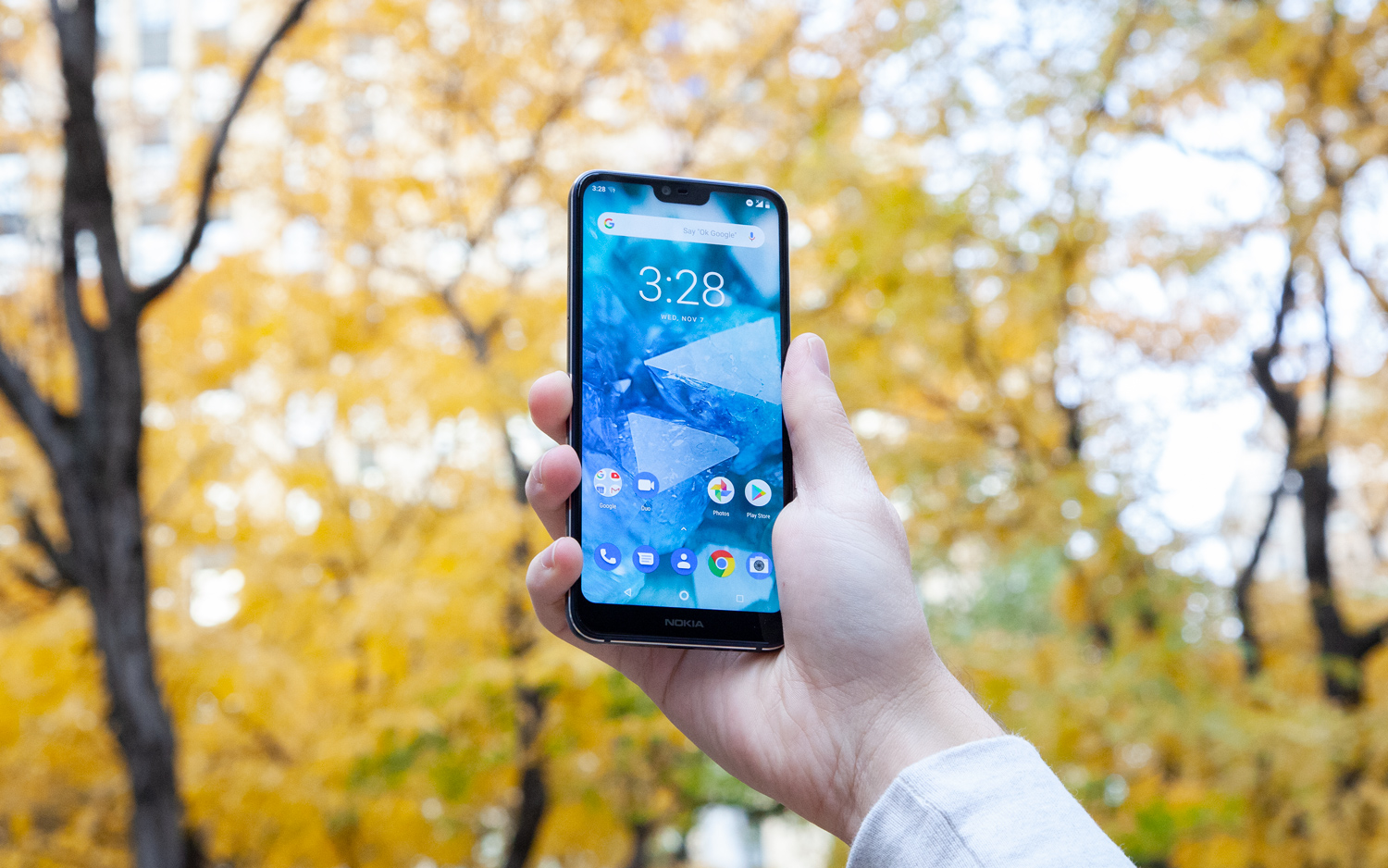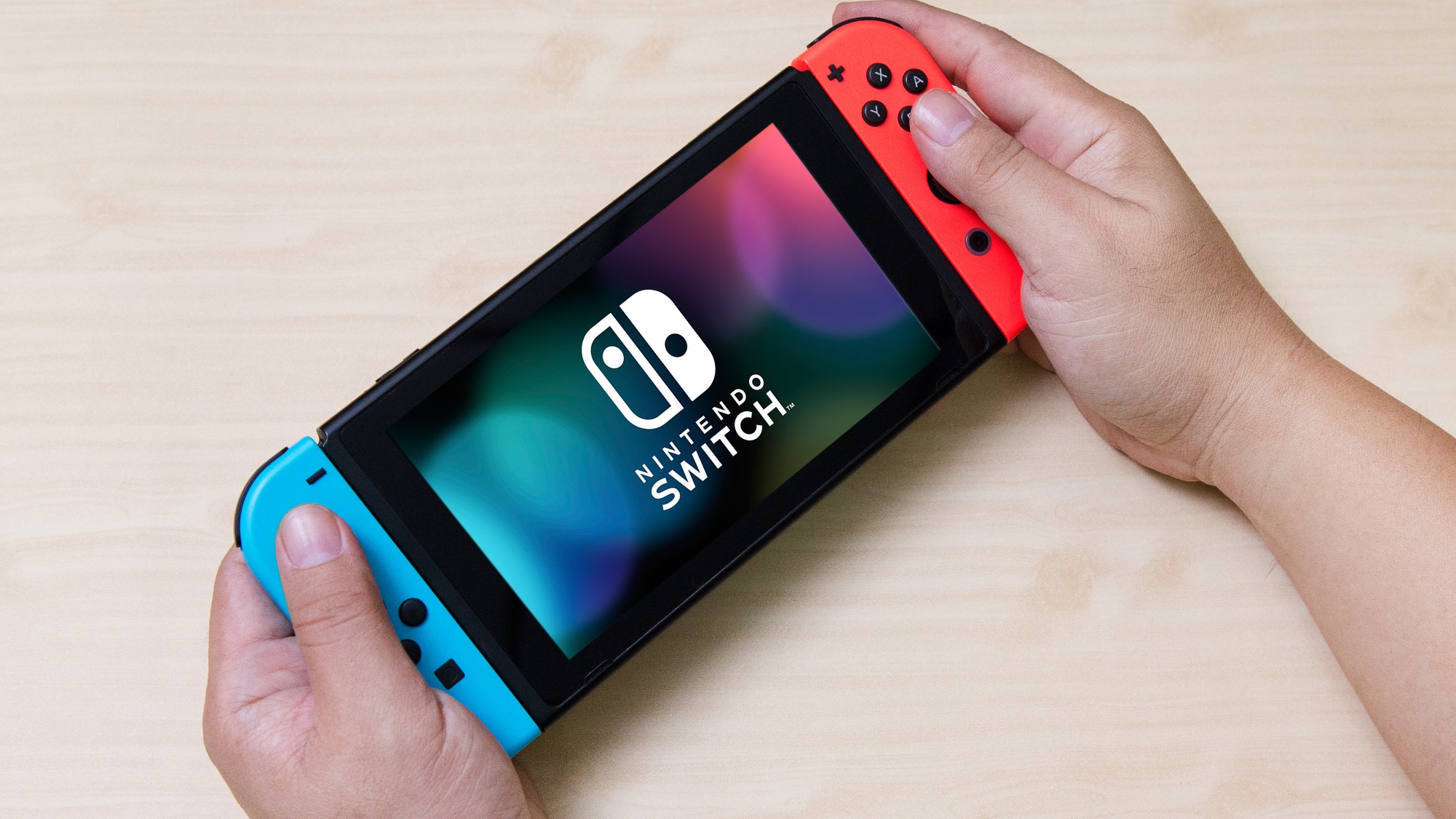Tom's Guide Verdict
Nokia has quietly released one of the most exciting inexpensive phones of the year in the Nokia 7.1, a well-designed phone that delivers first-rate performance.
Pros
- +
Stunning, solid design
- +
Android One software
- +
Great display
- +
Good cameras for the price
- +
Premium-caliber performance
Cons
- -
Not available on Verizon or Sprint
- -
Battery life could be better
Why you can trust Tom's Guide
Editor's note: The Nokia 7.1 is no longer sold and the Nokia 7.2 replaced it.
Last year, the Nokia brand was reborn as an Android phone maker, courtesy of startup HMD Global. This year, HMD Global proved that it could make excellent affordable handsets, with an eye toward quality design and a premium software experience aided by full adoption of Google's Android One platform.
Make no mistake — Nokia is back. But now, it needs to prove it has staying power against fierce midrange competition from Motorola and up-and-coming Chinese brands like Honor. And it’s pinned its hopes on the $349 Nokia 7.1.
Budget phones have a reputation of making hefty sacrifices to hit lower prices. HMD Global evidently didn't fall into that trap, though, and instead set about producing one of the best smartphones for under $400 you'll find all year. The result is a device that thoroughly surprises, from its cameras to its HDR-equipped display and even its performance, which equals that of flagships from the not-too-distant past.
Price and Availability
The Nokia 7.1 costs $349 (£299), which gets you get a smartphone with 4GB of RAM and 64GB of built-in storage. You can expand that by another 400GB with the use of a microSD card.
MORE: The Best Unlocked Smartphones
Get instant access to breaking news, the hottest reviews, great deals and helpful tips.
In the U.S., the device is GSM-unlocked. That means it can be used only on networks operating on the GSM standard, like T-Mobile, AT&T and Metro by T-Mobile, but not Verizon or Sprint. The Nokia 7.1 is offered in two colors: blue (with silver trim) and steel (with copper trim). Right now, Amazon and Best Buy are the only U.S. retailers carrying this phone.
Nokia 7.1 Specs
| Price | $349 |
| OS | Android 8.1 Oreo |
| Screen Size (Resolution) | 5.8-inch LCD (2280 x 1080) |
| CPU | Qualcomm Snapdragon 636 |
| RAM | 4GB |
| Storage | 64GB |
| microSD Slot | Yes (up to 400GB) |
| Rear Camera | Dual: 12 MP (ƒ/1.8) and 5 MP (ƒ/2.4) |
| Front Camera | Single: 8 MP (ƒ/2.0) |
| Battery Size | 3,060 mAh |
| Battery Life (Hrs:Mins) | 7:42 |
| Water Resistance | No |
| Size | 5.89 x 2.80 x 0.31 inches |
| Weight | 5.64 ounces |
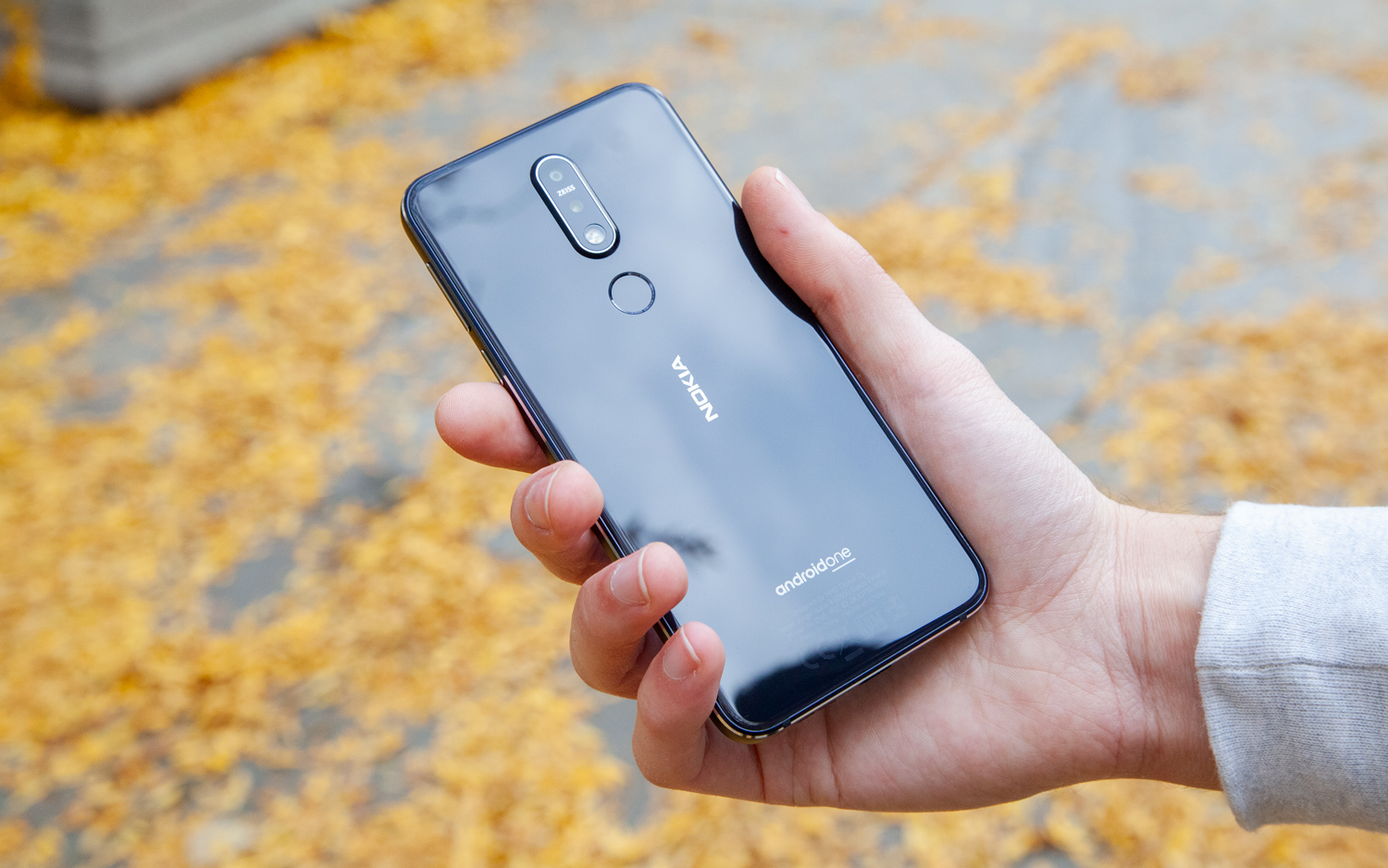
Thankfully, the Nokia 7.1 is not one of those budget phones. Sure, it employs the same glass-sandwich architecture that so many handsets do today, but this device manages to feel both solid and light. It consists of two slabs of slightly curved, strengthened glass joined by an ultrasturdy frame carved from 6000-series aluminum. The chamfered edges are finished with a metallic sheen — silver on the blue model or copper on the steel one — that plays beautifully off the matte sides.
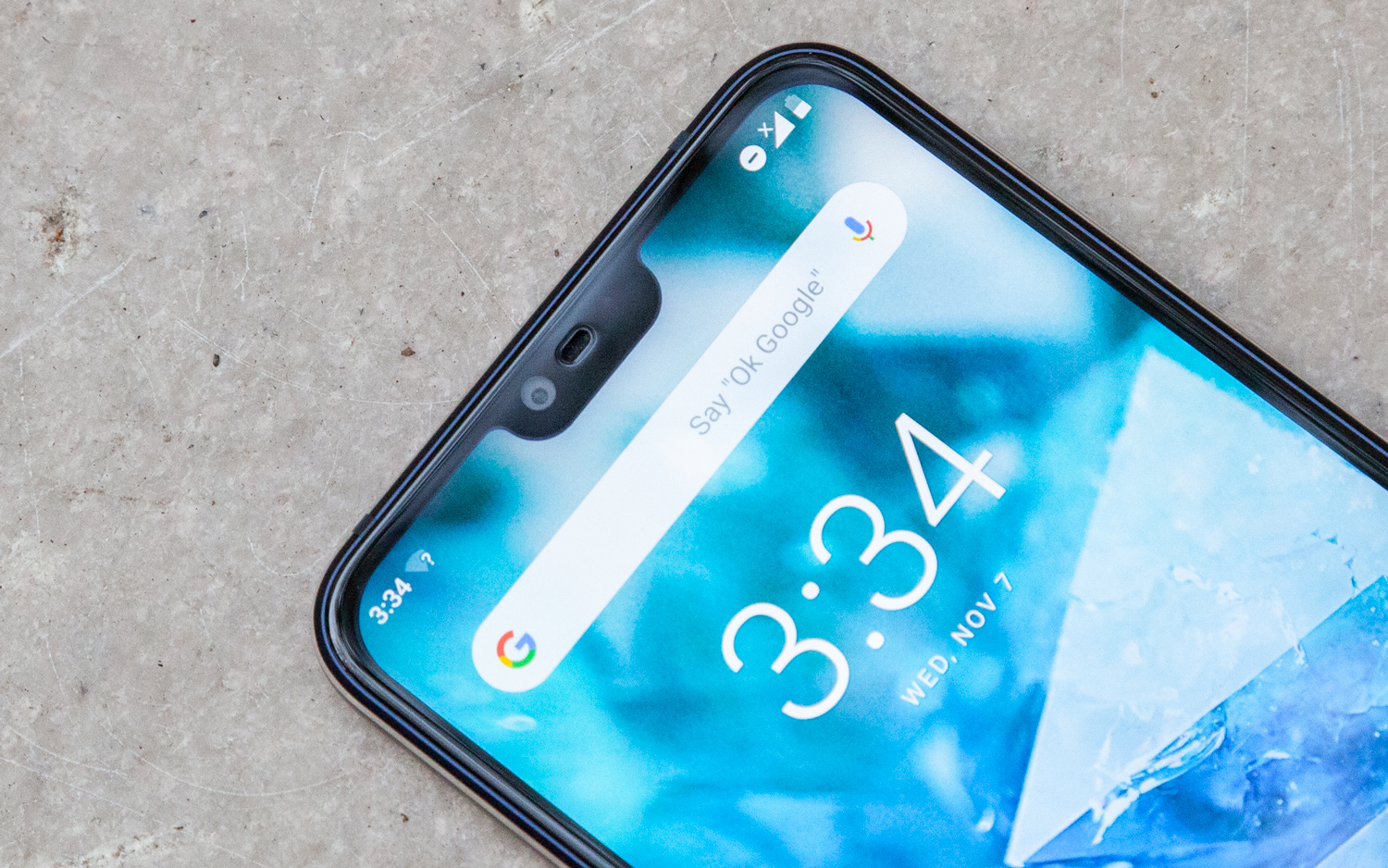
In fact, most of the Nokia 7.1 looks so good that it distracts you from the notch straddling the top edge of the display. Opposite that protrusion is a bottom bezel that is admittedly quite thick for a phone that has a notch. But, again, HMD Global has put so much care and attention into the overall product that I'm willing to forgive the iPhone X-aping design cues and any inconsistencies that come with them.
Far too many budget phones skimp on design. The Nokia 7.1 is not one of them.
The Nokia 7.1 feels absolutely great in the hand: light, just the right size and easy to flip around thanks to that curved glass. Unfortunately, though, should this device slip out of your grasp and into a puddle, the Nokia 7.1 hasn't been rated for water resistance. That's something you tend to find in more-expensive flagship models, though, to be fair, the Nokia 7.1 also has something you won't find in those pricier phones: a headphone jack. And unlike with some other cheap handsets, you won't need to part with NFC either, as the Nokia 7.1 supports transactions through Google Pay.
Display: HDR for a bargain
At first blush, there's nothing about the Nokia 7.1's 5.8-inch, full-HD+ LCD display that stands out compared to the kinds of screens other midrange handsets offer. These days, it's not hard to find a decent LCD panel with a comparable resolution and similarly tall aspect ratio — and that's certainly something to be thankful for.
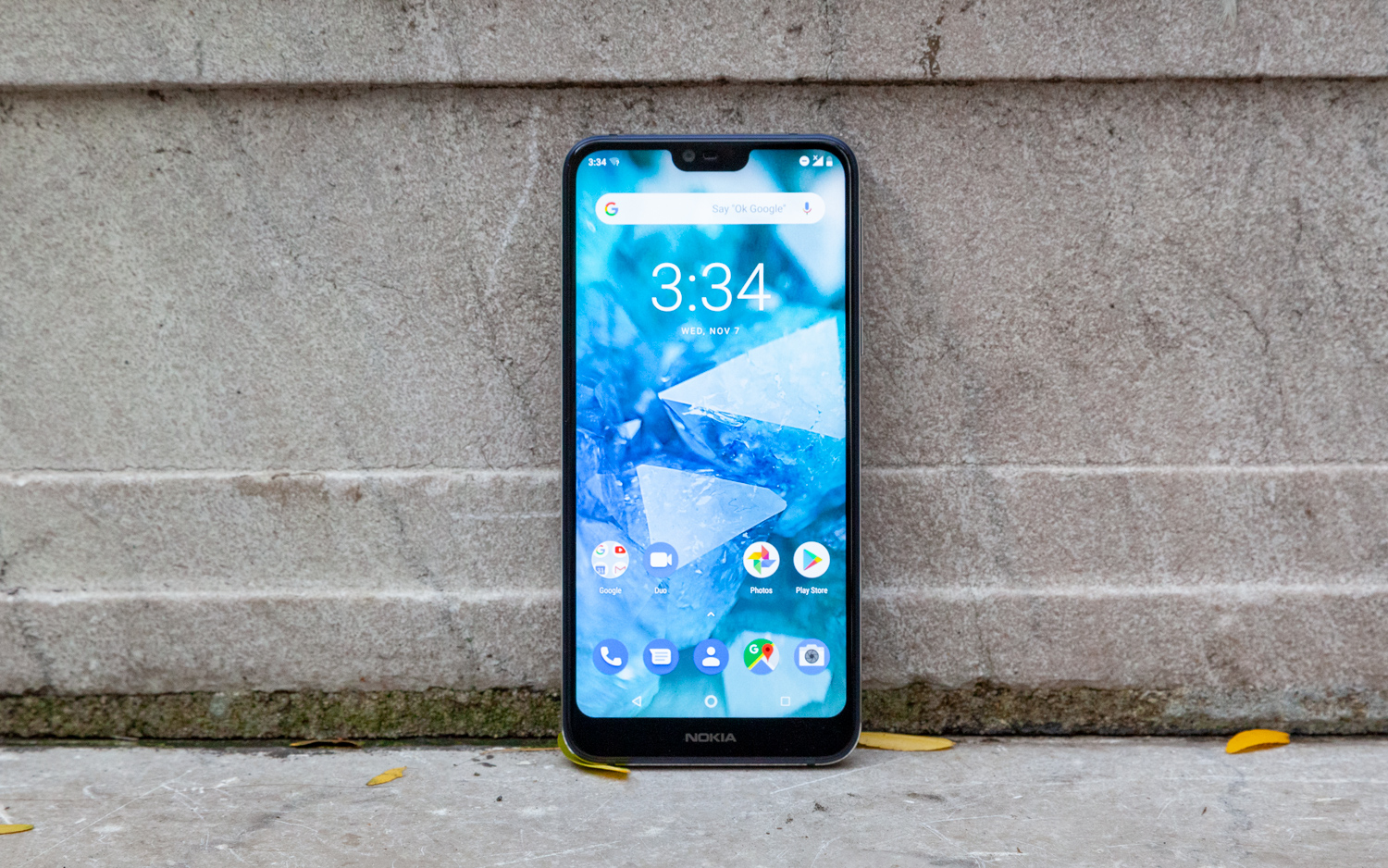
You have to dig a little deeper to understand what makes the Nokia 7.1's panel a bit better than the rest. It's a collection of tech called PureDisplay, which in Nokia-speak, essentially means this screen complies with HDR10, the industry standard for high dynamic range that TV makers use. It also means that the phone can even convert SDR content to HDR, by boosting the contrast ratio and painting with a wider color gamut.
The results speak for themselves. With the Enhanced HDR10 Display feature flipped on in the settings, the Nokia 7.1's screen paints mesmerizing hues, even though this is still an LCD panel at its core.
MORE: 10 Cheap Android Smartphones (Under $250) Ranked Best to Worst
I watched a trailer for the upcoming Bumblebee movie on both the Nokia 7.1 and the $249 Moto G6, one of the 7.1's midrange rivals, and simply put, there was no contest. On the Nokia, the titular Transformer's golden paint popped brightly off the backdrop of a verdant forest, and I could make out all the whirring gears and steel plates peeking out from between the robot's slabs of sheet metal, each glinting distinctively in the sunlight. Motorola's offering was simultaneously dimmer and more washed-out, and that device's visibility dropped off sharply as I tilted the phone in my hand to get some off-center perspectives.
With the Enhanced HDR10 Display feature, the Nokia 7.1 paints mesmerizing hues, even though this is still an LCD panel at its core.
By the numbers, the Nokia 7.1 sits comfortably among the upper echelon of LCD-powered, reasonably priced smartphones. The panel delivered a peak brightness of 452 nits; represented a wide, 164 percent swath of the sRGB spectrum; and served up accurate colors, with a Delta-E rating of 0.33. (Numbers closer to zero are better in that last test.) For reference, the Moto G6 turned in a 413-nit max, covered 113 percent for the sRGB gamut and offered nearly as accurate hues, with a 0.39 Delta-E score.
Camera: Serviceable shots in a pinch
You can't launch a midrange phone with premium aspirations in 2018 without more than one lens for the camera, and well, we know how much Nokia likes its lenses.
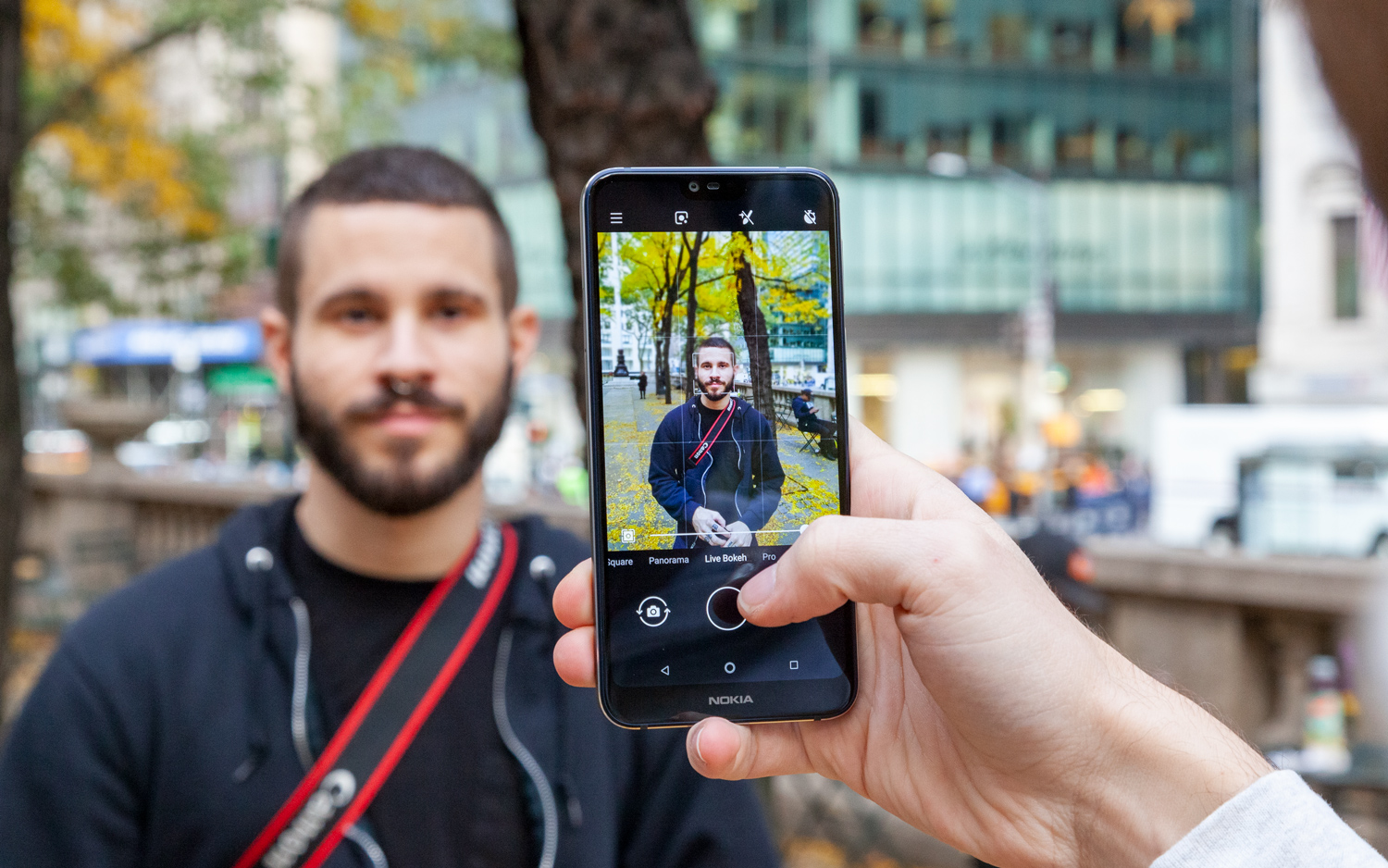
Thankfully, though, the Nokia 7.1 doesn't have five shooters on the back, all staring at subjects like the eyes of a demonic arachnid. There are just two at the rear of this $349 phone: a primary, 12-megapixel sensor with an ƒ/1.8 aperture, partnered with a 5-MP sensor for discerning depth.
Those cameras take decent photos, too, as shown by the fall scene you see above, taken outside the New York Public Library. The shot from the Nokia 7.1 is universally sharper, with less distortion at the fringes of the frame, less blur and more-accurate white balance, which isn't as unnaturally warm as what the Moto G6 went produced.
I also like the way the Nokia 7.1 handled this image of a nearby statue in comparison to the Motorola's approach. That phone brightened everything at the expense of glossing over the finer textural details, absolutely blowing out the marble steps at the base and smudging the buildings in the background.
Back in our office, Nokia's Live Bokeh mode did an excellent job of separating my colleague Caitlin from her surroundings. The resulting portrait is crisp and clear, with accurate colors and a defined line between where the foreground stops and the blurred portion begins. The Moto G6 muddied up that isolation, putting soft edges around Caitlin's shoulders and completely omitting a large portion of her hair from the area of focus. The Motorola also greatly oversaturated things, especially the light near the ceiling.
Finally, the Nokia 7.1 is the device I'd rather have in my pocket when I want to nab a selfie. This phone's 8-MP, front-facing shooter captures photos that fortunately lack the combination of artificial warmth and dramatic contrast that makes the Moto G6's shots seem lightly shopped.
If you're in the market for a sub-$250 phone with a good camera, the Galaxy A20 is a capable alternative. It's not quite as well-rounded as the Nokia 7.1, but it's worth consideration.
Performance: New midrange benchmark
According to Qualcomm, the Snapdragon 636 inside the Nokia 7.1 is 40 percent faster than the 630 chipset that delivered fine performance in the $269 Nokia 6.1.
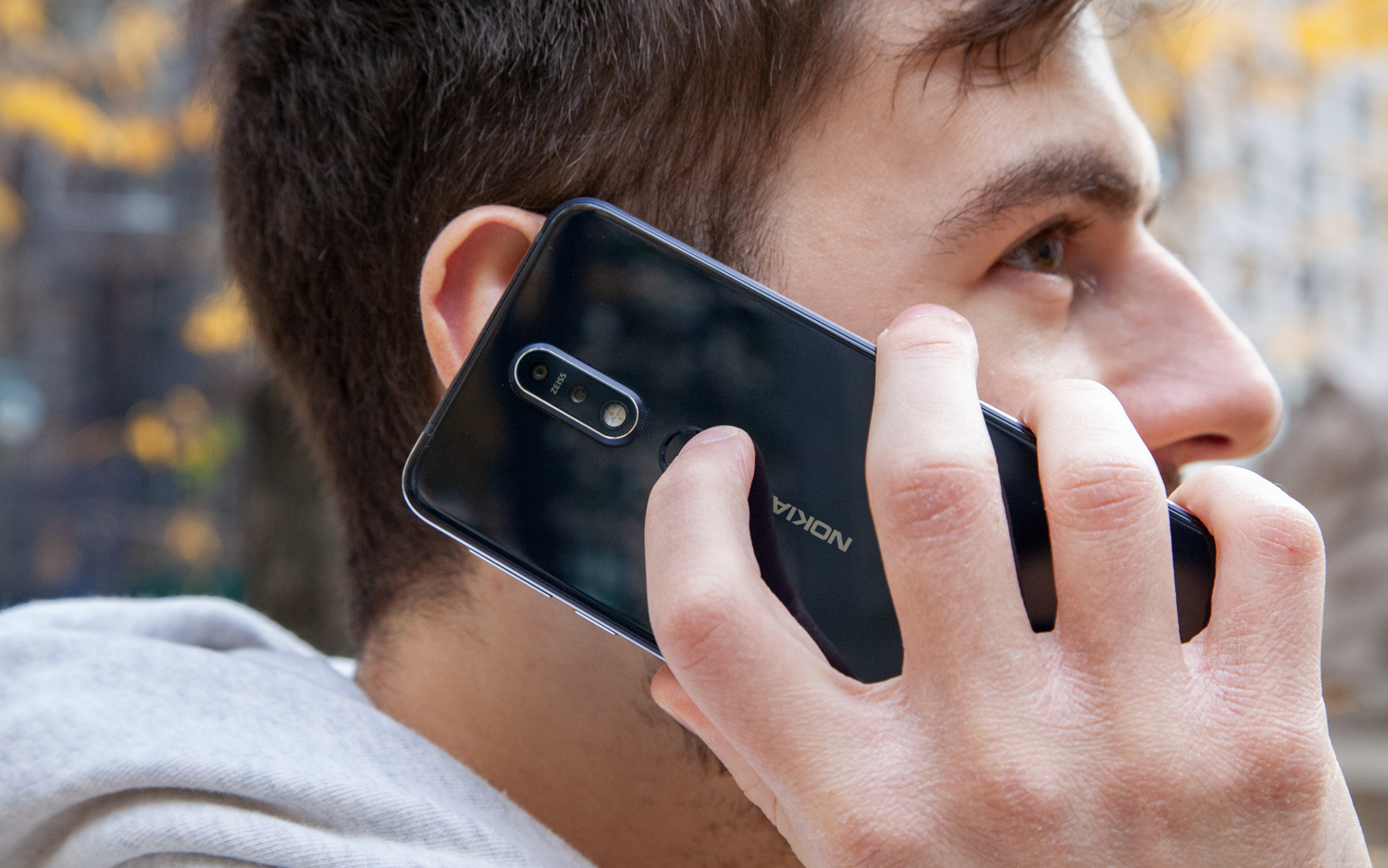
Couple that with the Nokia 7.1's 4GB of RAM, which is plenty for a device in this category and price range, and you get a phone that's adequately equipped to handle anything you throw at it.
Well, almost — you won't be able to play cutting-edge games, like Madden NFL Overdrive, at their most demanding settings, as the device's 950 score in 3DMark's Sling Shot Extreme OpenGL ES 3.1 test demonstrated. (Normally, we use Ice Storm Extreme for midrange handsets, but the Nokia 7.1 maxed out that test.)
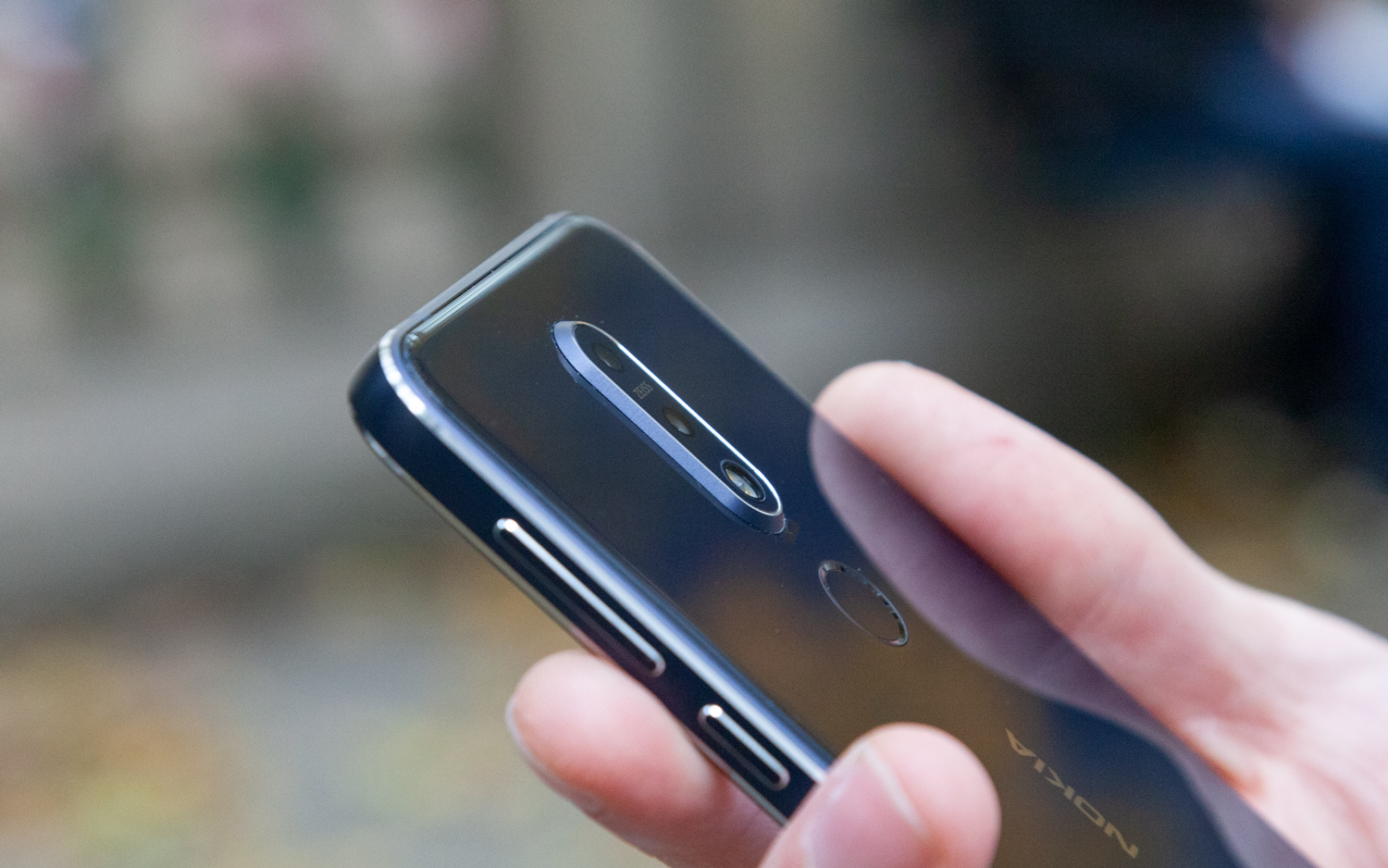
That said, I was still able to turn blisteringly quick laps in a Nissan Skyline GT-R in realistic racer Assoluto Racing. And I even picked off some enemies in PUBG Mobile on balanced settings, experiencing infrequent hiccups.
MORE: Best Smartphones - Here Are the 10 Best Phones Available
Those are encouraging testaments to performance, and when you turn to Geekbench 4, which measures overall performance, the Nokia 7.1 is technically a little more powerful than Android flagships from two years back. The device delivered a multicore result of 4,953 points, roughly 800 points more than the original Google Pixel scored and more than 1,000 points above the slightly cheaper Nokia 6.1's mark.
Battery: Nothing special
The 3,060-mAh battery inside the Nokia 7.1 charges quickly but depletes relatively quickly, too. The phone lasted 7 hours and 41 minutes in our battery test, which tasks the phone with loading a succession of web pages endlessly over T-Mobile's LTE network until the device runs out of juice.
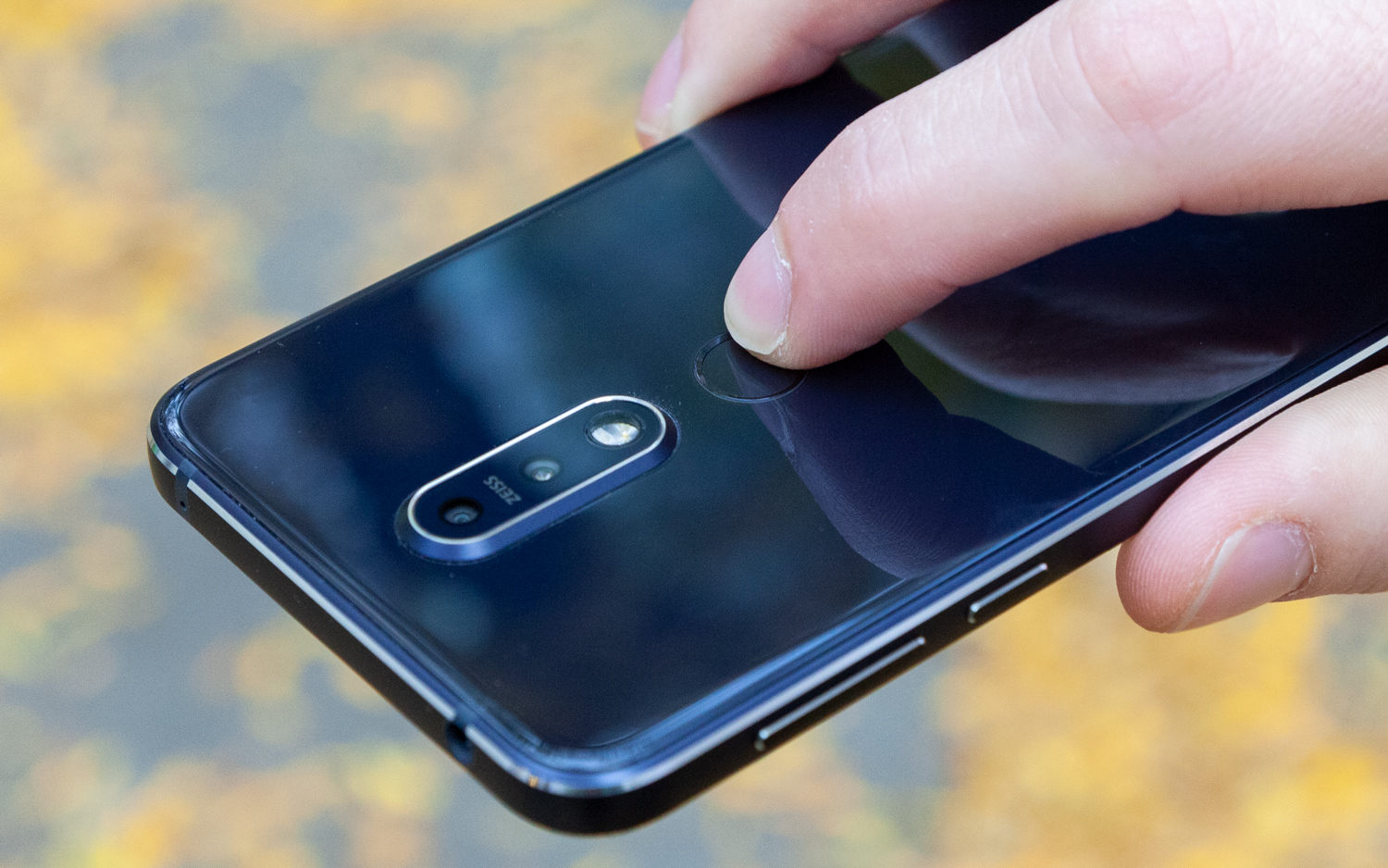
Unfortunately, that time is a ways off from the impressive 10 hours and 34 minutes of the Nokia 6.1 or the 9 hours and 25 minutes that the Moto G6 turned in. However, those phones have smaller and lower-resolution screens, feature less-thirsty processors, and have less RAM, so the discrepancy isn't totally surprising.
The Nokia 7.1 hurries to replenish itself when used with the stock adapter. The handset charged to 48 percent after just 30 minutes, which isn't too shabby. Don't let the glass back fool you, though; this phone can't charge wirelessly, even though its flagship-aping good looks may lead you to believe otherwise.
Software: Quality experience, uncertain future
HMD Global has gone all in with Android One, using the unmodified version of Google's mobile OS across all Nokia's phones, and that's a great thing. It means users get a Pixel-like software experience no matter how much they spend. And it also guarantees updates to the latest versions of Android for "at least" two years (according to HMD Global), with security patches distributed for three years.
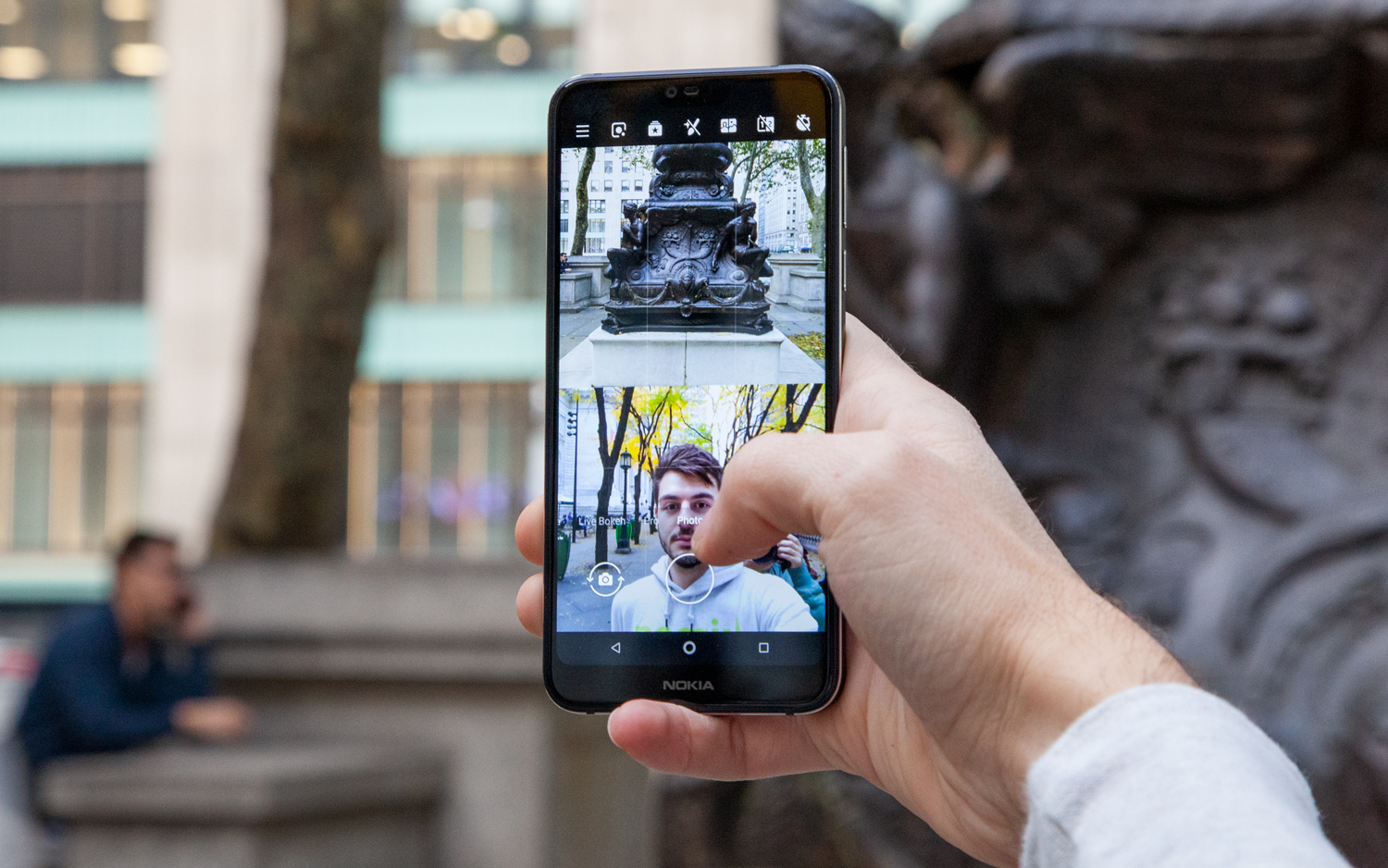
However, rather surprisingly, the Nokia 7.1 does not come with Android 9 Pie installed out of the box. Our unit is still running Oreo, though we're told the phone will see a Pie update before November ends.
The Nokia 7.1 raises the bar for budget phones in every sense.
That's not too long a wait, though it has us somewhat skeptical of the Nokia 7.1's long-term upgrade path. Although Google has promised multiple software updates for Android One products, there's some ambiguity about whether that mandates a minimum of two letter upgrades over the handset's life.
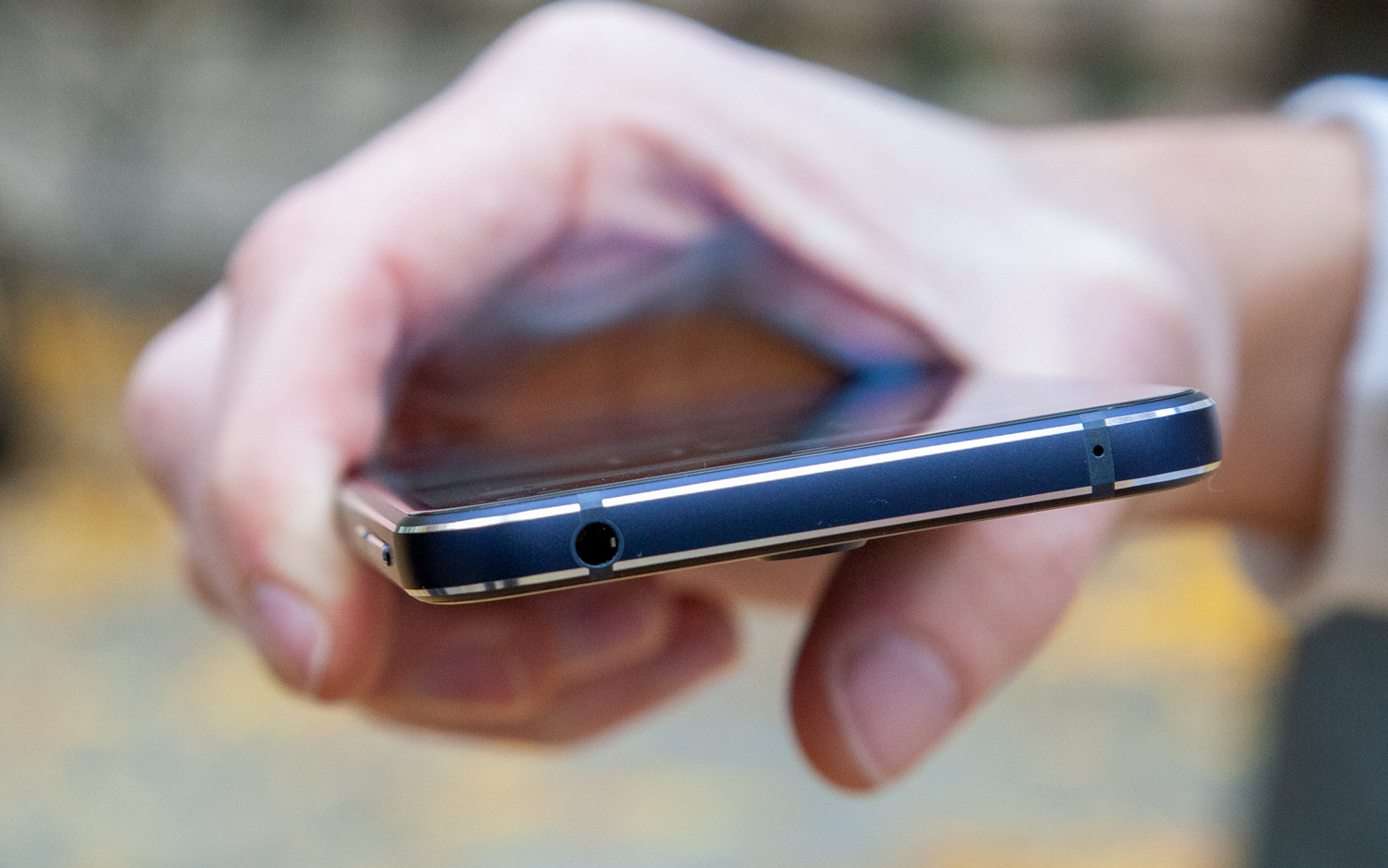
Worst case scenario, Nokia 7.1 owners might go no further than Android Q at the end of 2019, as they would have already burned one of their updates on the Pie release this fall. That's not confirmed by any means, and according to Google, Android One partners like HMD Global reserve the right to continue support after the initial 24 months if they wish. But budget phones tend to get shortchanged on software, so take that into consideration.
MORE: Best Android Phones - Top Rated Smartphones You Can Buy ...
At any rate, the Nokia 7.1 comes devoid of bloatware, just as you'd expect, and the phone even gets Google's Files Go storage-management app pr-installed. You do miss out on some Pixel-exclusive functionality, like Digital Wellbeing; Now Playing, which you use to identify songs from the lock screen; and the highly-praised Call Screen feature. But otherwise, this is stock Android in all its simple, light and fast glory.
Bottom Line
The Nokia 7.1 raises the bar for budget phones in every sense. At $349, however, this handset may also raise the threshold for what can reasonably be considered a budget phone. Some might find it difficult to justify spending an extra $100 over the still very compelling Moto G6. Is Nokia's new device worth the extra cash worth?
I reckon it is. HMD Global has packed a darling of a display in this phone, gifted it with class-leading performance that can keep pace with that of devices that were considered cutting edge just a year and a half ago, and thoughtfully partnered with Google to give users the best software experience possible. What's more, the company wrapped all of that in a design that obscures that this phone costs well less than half of what you'd pay for most flagships today.
The Nokia 7.1 is blighted only by subpar battery life and an unfortunate shortcoming that affects most unlocked phones: incompatibility with half of the mobile networks in the U.S. For many buyers, though, I suspect those will be easy concessions to make — because in every other respect, this Nokia is a winner.
Credit: Tom's Guide
Adam Ismail is a staff writer at Jalopnik and previously worked on Tom's Guide covering smartphones, car tech and gaming. His love for all things mobile began with the original Motorola Droid; since then he’s owned a variety of Android and iOS-powered handsets, refusing to stay loyal to one platform. His work has also appeared on Digital Trends and GTPlanet. When he’s not fiddling with the latest devices, he’s at an indie pop show, recording a podcast or playing Sega Dreamcast.
-
wutwatt You can also purchase this phone from B&H in the US. I bought mine there because they were the only store with the Steel color in stock.Reply -
ikijibiki Quite a few people on the official Nokia 7.1 support forum are reporting the Pie update has bricked their phones. Rumor going around Nokia has pulled the update.Reply -
onejude I'm confused. Here you state a Delta e of .33 but gsmarena found 6.9. How can this be?Reply -
shamilben25 Nokia 7.1 is perfect size, good looking, well build, premium materials and design. I must say Camera is not that great and why Nokia 7.1 Camera app does not have PAUSE button. Missing wireless charging and poor speaker quality. I also bought my Nokia7.1 from B&H in NYCReply
